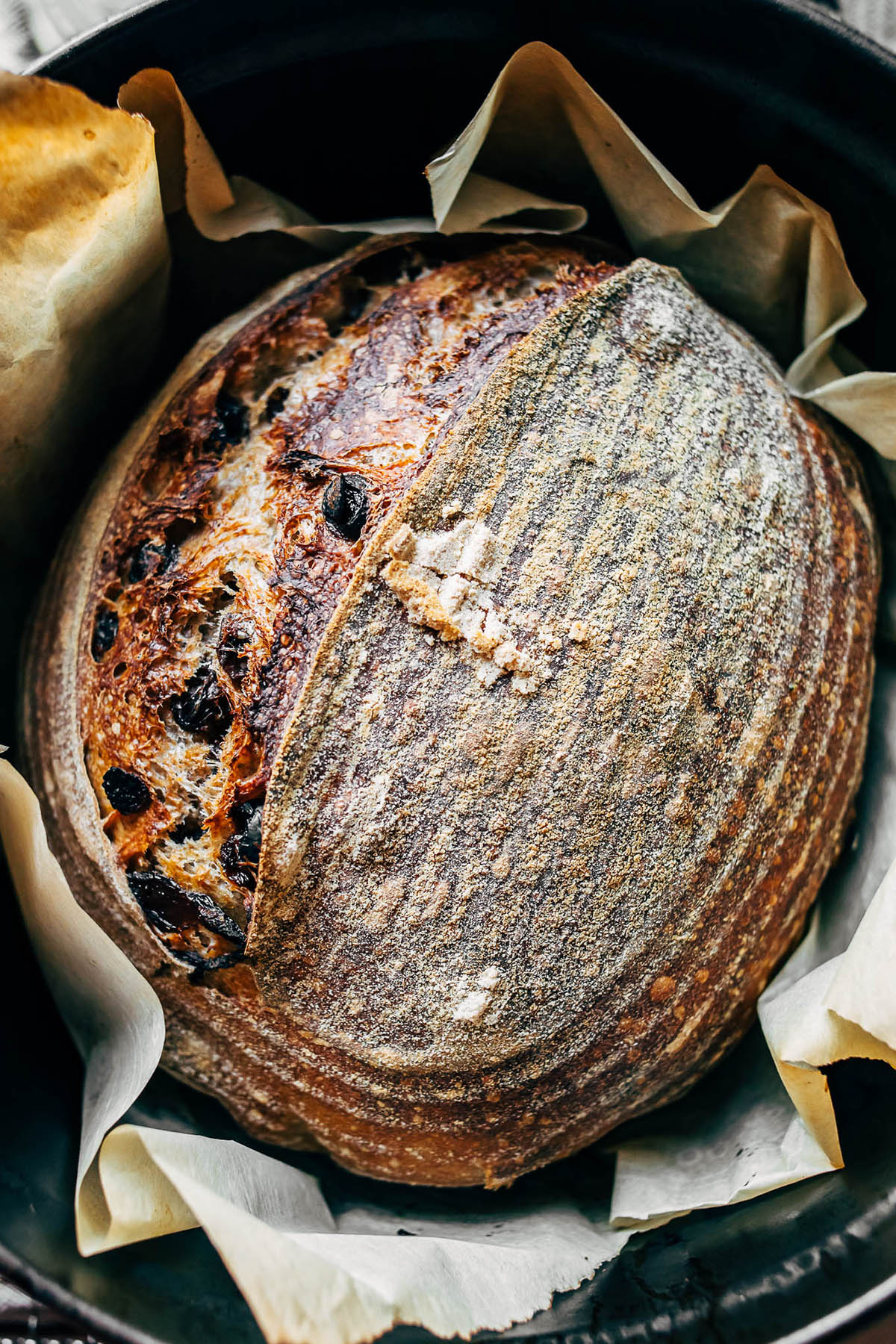Cinnamon Raisin Sourdough Bread
4.9
(15)
Your folders
Your folders
Prep Time: 2040 minutes
Cook Time: 40 minutes
Total: 2080 minutes
Servings: 10
Author : Sophie Mackenzie

Ingredients
Export 4 ingredients for grocery delivery
Instructions
Step 1
Take out about 1-2 tablespoons of your starter from the fridge and mix it with 50 grams of room temperature water and 50 grams of flour (sifted bread flour, whole grain, spelt, or a combo - whatever you prefer as long as the flour to water ratio is 1:1).
Step 2
Cover the bowl with a plate and leave it on the counter to ferment overnight for approximately 8-12 hours.
Step 3
Once your levain is ready, combine 100 grams of the levain with 375 grams of water. Add the flour to the water mixture and, using your hands, mix to combine.
Step 4
Once the dough is mixed, cover with a tea towel and let sit at room temperature for 40 minutes to rest. Meanwhile, soak the raisins in room temperature water (make sure the raisins are covered with at least an inch of water).
Step 5
After the elapsed 40 minute resting time, add the salt. Mix well until combined. Drain the raisins and mix them into the dough along with the cinnamon.
Step 6
To do this get your hands damp and reach under the dough on the opposite side of the bowl from you.
Step 7
Pull the dough up and over towards you.
Step 8
Repeat this so the side closest to you folds over to the side away from you and the side on your left folds towards you right, and your right folds towards your left. Think of it as wrapping a package.
Step 9
Then, scoop your hands under the ball of dough and flip it over completely. This completes one “fold”.
Step 10
Complete 6 more folds (one fold every 30 minutes) for 3 hours total.
Step 11
Begin by taking the dough out of the bowl and letting it rest on the counter for 20 minutes.
Step 12
Meanwhile, prepare your banneton by dusting it with flour, or layer a clean tea towel in a medium mixing bowl and dust liberally with flour (50-50 wheat flour and rice flour is a great dusting combo).
Step 13
Shape your dough making sure you get as much surface tension as possible without tearing the outside of the loaf.
Step 14
Once shaped, turn the loaf into the lined and floured bowl or banneton (top-down, seam side up).
Step 15
Gently flour the top (previously the bottom) of the dough before covering with the edges of the tea towel. Set in the fridge overnight.
Step 16
The next day place your dutch oven in the oven and preheat to 500°F (260°C) or as hot as your oven can go, but no higher than 500°F (260°C).
Step 17
After the oven has come to temperature, let the dutch oven continue to preheat for another 30 minutes.
Step 18
Once the dutch oven has been preheated, take your bread out of the fridge.
Step 19
Gently invert the dough onto a piece of parchment paper that will be large enough to lift your bread into and out of the dutch oven.
Step 20
Gently score the bread with a sharp knife or bread lame.
Step 21
Using oven mitts, carefully remove the dutch oven from the oven, take off the lid and then carefully lift the dough into the pot using the parchment paper.
Step 22
Using oven mitts, carefully place the lid back on the dutch oven and put the entire dutch oven back into the heated oven.
Step 23
Reduce the heat to 230°C (450°F) and bake for 20 minutes. Carefully remove the lid (be careful of steam) and bake for another 20-25 minutes with the lid off.
Step 24
Remove the pot from the oven and carefully lift out the loaf using the edges of the parchment paper and let cool completely on a wire rack.
Step 25
If heat makes it too difficult to extract the dough and parchment layer safely, just let the loaf cool in the Dutch oven - don't risk burning yourself.